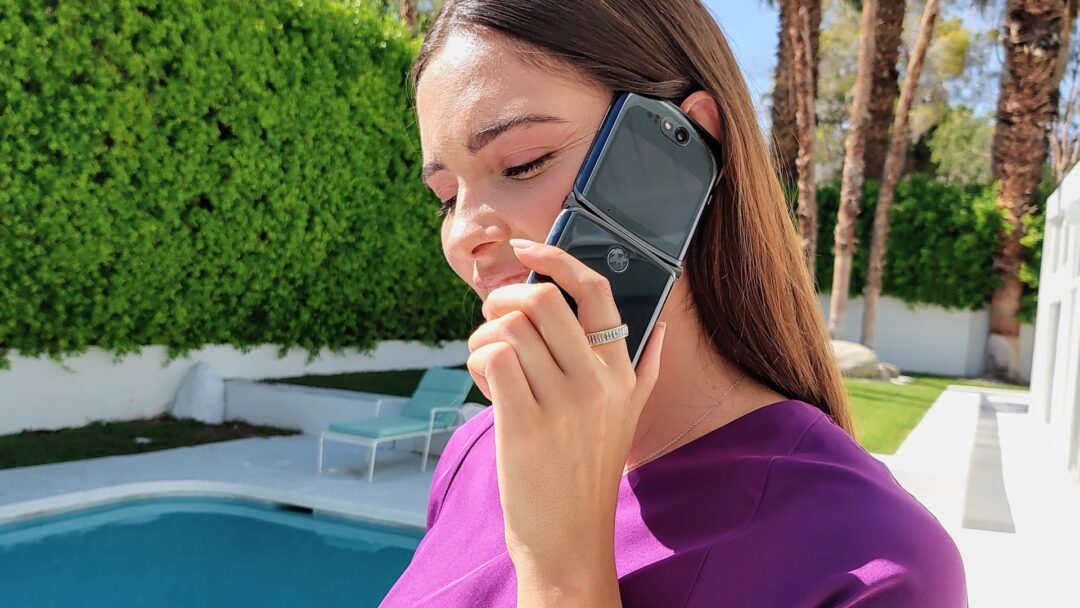It’s been almost a year since we last tested a real foldable mobile. It was the Samsung Galaxy Z Flip that was first on the test bench at the time, even though Motorola had launched the Motorola Razr several months before – already in the autumn of 2019. The new Motorola Razr was presented as the successor to the original, extremely popular foldable of the same name, which came on the market in 2004 and subsequently sold more than 50 million devices worldwide.
Therefore, of course, we had been looking forward to testing the new smartphone with flexible screen and Android, but it just never happened. Motorola allegedly produced the new folding mobile in so few copies that “unfortunately” there were no test samples available to the press, and Samsung therefore overtook Motorola inside with the Galaxy Z Flip, which was launched in early February 2020 and was made available as a test sample. less than 14 days later.
But now we have finally managed to get the Motorola Razr in our hands. Not in the version that the Chinese-owned company launched back in 2019, but instead the Motorola Razr 5G, which is an updated version with 5G and new processor that came on the market in the fall of 2020.
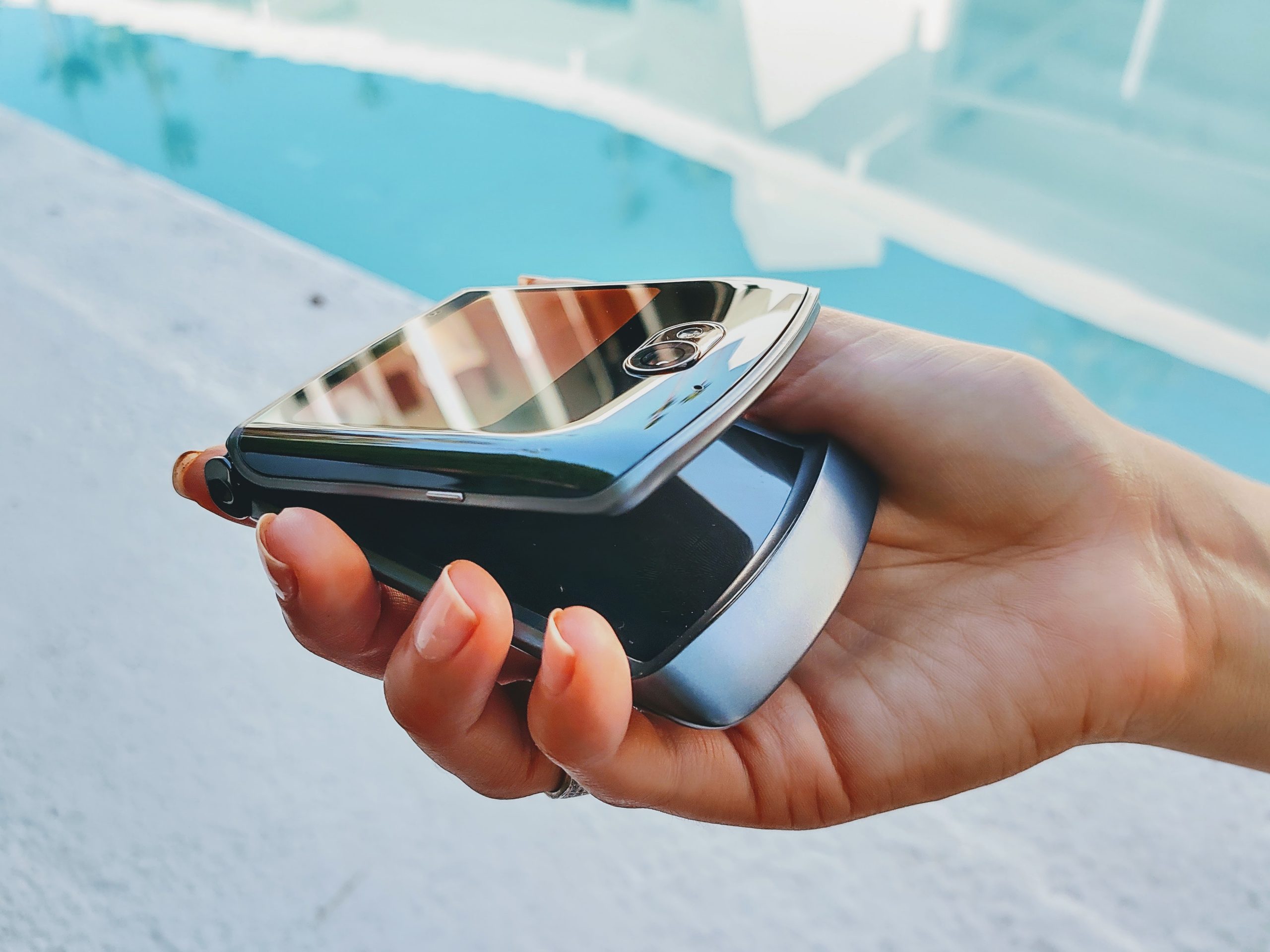
Design and construction
The Razr 5G is almost identical to the 2019 Motorola Razr, which primarily means that it has two screens: the large inner screen that folds when the phone is closed, and a smaller outer screen on the front of the folded phone.
The inner OLED screen is made of plastic and is of course flexible. The mobile can be opened and closed with one hand once you get used to the movement. On the other hand, unlike the Samsung Galaxy Z Flip, the Razr 5G cannot stay open on its own. Either the mobile is completely open or it folds, which means that the Razr 5G, unlike Samsung’s folding mobile, can not be placed on any surface and used as its own camera tripod.
In fact, Motorola has neither provided the Razr 5G with any special productivity features nor other unique uses based on the foldable screen. It’s all about the “fold”. That is, the satisfying feeling of being able to fold the mobile together in the middle.
In itself, the Motorola Razr 5G is quite robust – made as it is, of Gorilla Glass 6 both front and rear (when folded) and surrounded by aluminium. The hinge that makes it next to the phone’s folding mechanism seems robust (Motorola also promises that the Razr 5G can withstand being opened and closed up to 200,000 times) and a little tight, so you actually have to have a good twist in the wrist for to be able to open the mobile in one movement. On the other hand, one hardly needs to be afraid that it will fall apart.
When folded, the folding mobile does not take up more space than it easily and elegantly fits in most pockets, while when unfolded it is approximately the size of the iPhone 12 Pro Max.
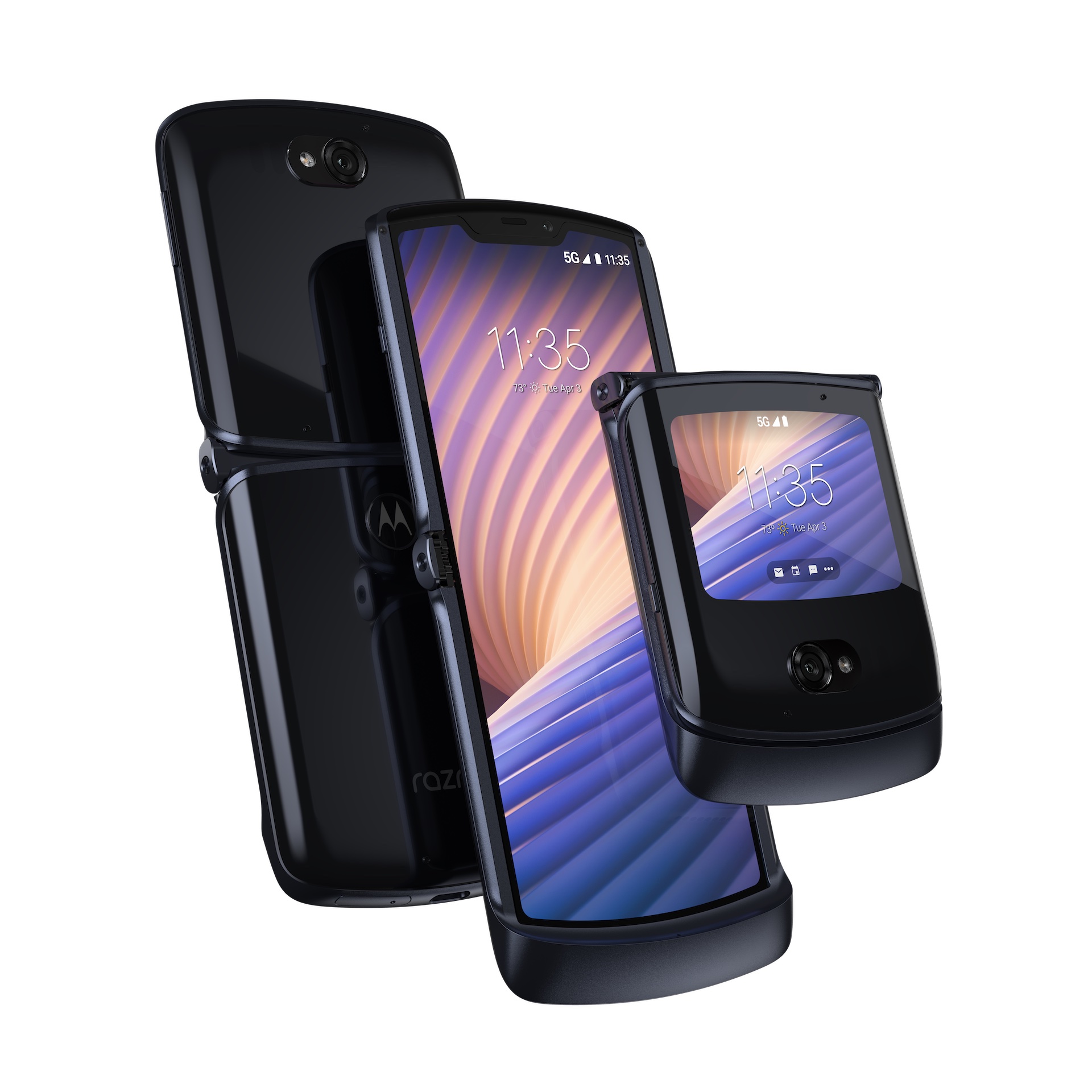
Screen and sound
The internal screen of the pOLED type measures 6.2 inches and has a resolution of 2142 x 876 pixels, which gives the same 21: 9 cinema format as the Sony Xperia 1 II and Motorola’s own One Vision budget mobile. The elongated screen format means that the Razr 5G is almost a kind of fold-out cinema that you can carry in your pocket, just as it also provides more vertical space for your feed in the Facebook app as well as in Twitter, on Instagram and on web pages. .
The external screen measures 2.7 inches and has a resolution of 800 x 600 pixels. It’s a lot more than the far too small front screen on the Samsung Galaxy Z Flip, and Motorola Razr’s external screen also has several functions, so you e.g. can use the camera as well as apps like Messages, Calculator and YouTube without opening the mobile.
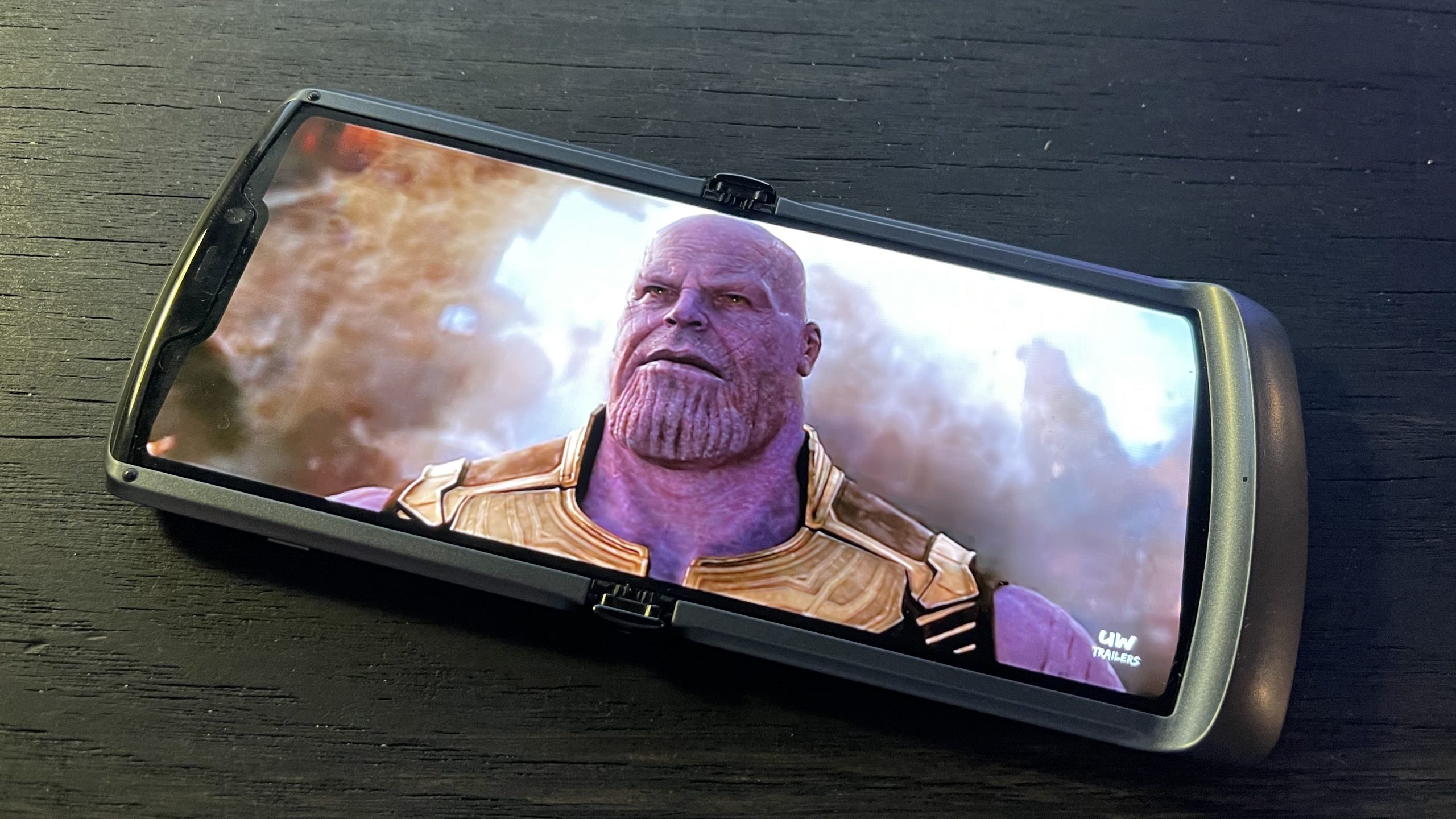
When the screen of the Motorola Razr 5G is unfolded, you can hardly see with the naked eye that it is a flexible mobile screen. On the other hand, it is fairly clearly felt with the fingers when operating the mobile, and there is no doubt that Samsung’s Ultra Thin Glass (a kind of glass alloy with a thin layer of plastic as a protective layer and flexible glass underneath), which forms the screen of the Galaxy Z Flip, is of higher quality and probably also lasts better in length than the plastic material that Motorola Razr is equipped with.
And once you get used to the new experience of being able to fold your mobile screen in the middle, the Motorola Razr 5G unfortunately falls short. The screen resolution is not very high, and the image quality is not what you should expect from a smartphone in the high-end segment, in terms of price.
Of the built-in speakers, there is only one, and the sound is not noticeable, so we will pass that topic in silence.
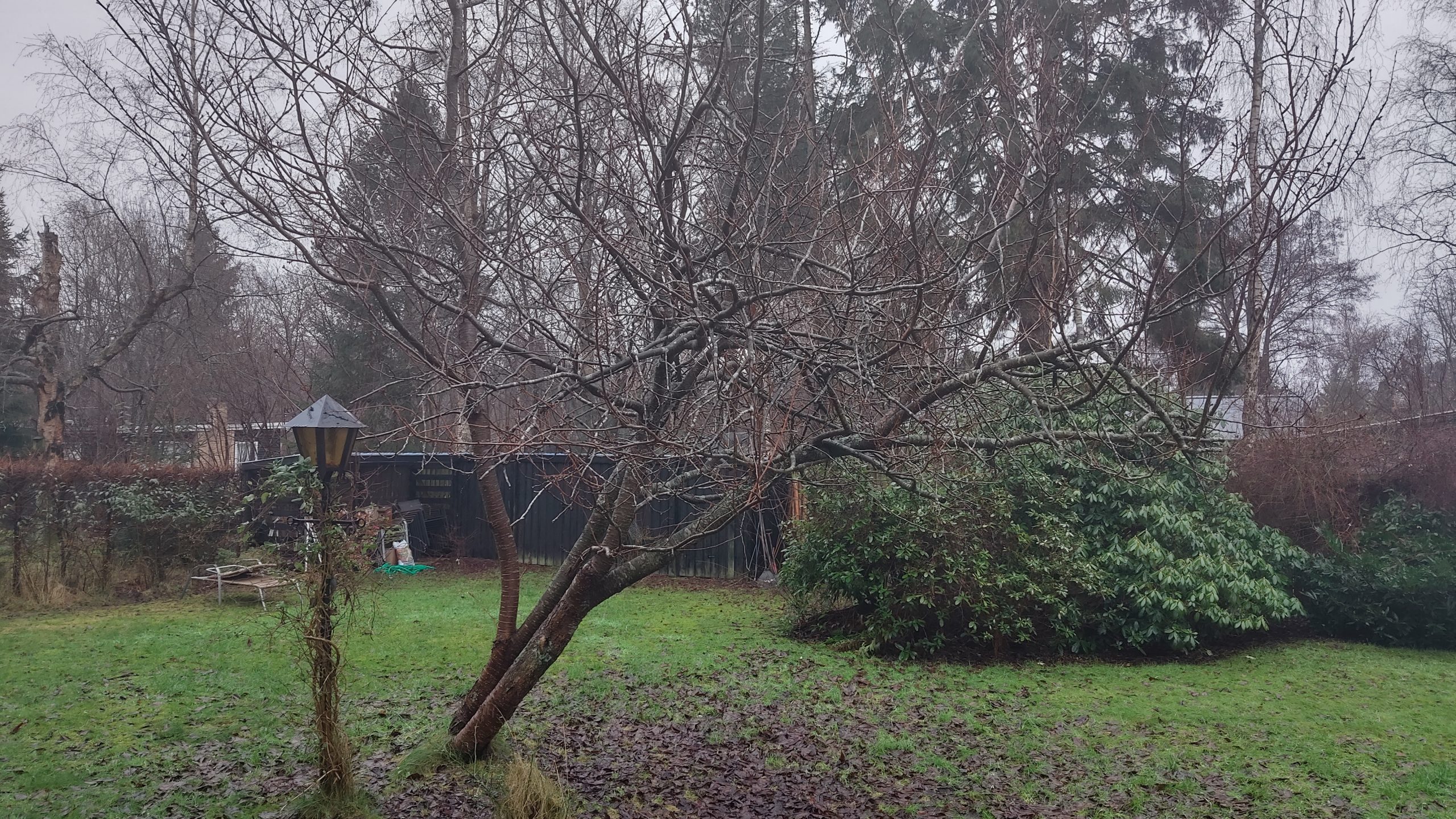
Camera
On paper, the Motorola Razr 5G is equipped with an excellent camera with 48 megapixel lens and quad pixel binding, which should ensure better sensitivity in low light. In practice, the images from the camera become dull and flat. Not wildly surprising, since pixel binning in itself is not conducive to image quality.
The so-called selfie camera, which sits inside when the screen is unfolded, is really bad, but luckily you can use the external screen as a viewfinder if you want to take self-portraits. Forgot all about ultra-wide angle and optical zoom function, but at least you can then take proper selfies for Instagram with the Motorola Razr 5G.
The front screen also has a fun feature called animation for eye-catchers, which shows silly faces to get the subject’s attention if you take pictures of others.
On the other hand, the hinge’s inability to “lock” the position of the screens means that the Razr 5G cannot be used as a camera tripod when taking pictures or videos of itself, making the Galaxy Z Flip a far more obvious choice for both young and old, who will use the phone to enrich the rest of us on Instagram, TikTok and YouTube.

Performance and features
In addition to 5G support, the new Razr 5G has more memory and storage as well as a faster processor than its predecessor. But compared to the Samsung Galaxy Z Flip, which at the time of writing is the only real competitor on the market, Motorola’s folding mobile comes short point by point.
In benchmark tests, the Razr 5G performs roughly on a par with the OnePlus Nord, which is probably an excellent mobile in the middle class, but thus also costs only a quarter of what one should bleed for the Motorola Razr. Also in daily use, we experience the folding mobile as a bit dull in the pull-up.
However, Motorola should be commended for the battery, which is only 2800 mAh, but still provides over six hours in our stress test.

Conclusion
The Motorola Razr 5G tries its best to speak to the heart rather than the brain. After all, it comes with true smartphone functionality wrapped in a foldable screen case that does everything to look like Motorola’s iconic successful mobile from the early 00’s.
But Samsung has overtaken Motorola with a product that has the same form factor and charm, but which also offers users really new, creative options, which Motorola has neglected.
And when the Motorola Razr 5G is in almost all respects inferior to its competitor – with lower screen resolution, less robust design, poorer camera and slower processor – then it is very difficult to argue that the childhood savings should be spent on the Motorola Razr 5G. The icon has faded and it should cost half as much!

We think
Foldability is an attraction in itself and the front screen is large enough to be usable. In addition, solid battery life. No notable features that take advantage of the foldable design. The quality is generally not on par with the extremely high price.
10990 €
Specifications
- Operating system: Android 10
- Screen: 6.2 “21: 9 pOLED, 2142 x 876, 373 ppi (primary) / 2.7” gOLED, 800 x 600, 370 ppi (front)
- Processor: Snapdragon 765G + Adreno 620 GPU
- Memory: 8 GB RAM/256 GB storage
- Cameras: 48 Mp f/1.7 OIS (primary)/20 Mp f/2.2 (front)
- Wireless: 5G, Wi-Fi 5, Bluetooth 5.1, NFC, A-GPS, GLONASS, Galileo
- Dimensions and weight: 169.2 x 72.6 x 7.9 mm (folded out), 91.7 x 72.6 x 16 mm (folded)/192 g
- Battery: 2800 mAh lithium-ion, 15 W TurboPower charge
- Web: motorola.com
Benchmarks
Geekbench 5: 620 (single-core) / 1.913 (multi-core)
Geekbench 4: 2.863 (single-core) / 7.793 (multi-core)
GFX Bench T-Rex: 3.360
AnTuTu 8: 318.022
3DMark Sling Shot Extreme: 3.290
PCMark Work 2.0: 7.957
Basemark Web 3.0: 311,64
Batteritest: 6:03 hours
